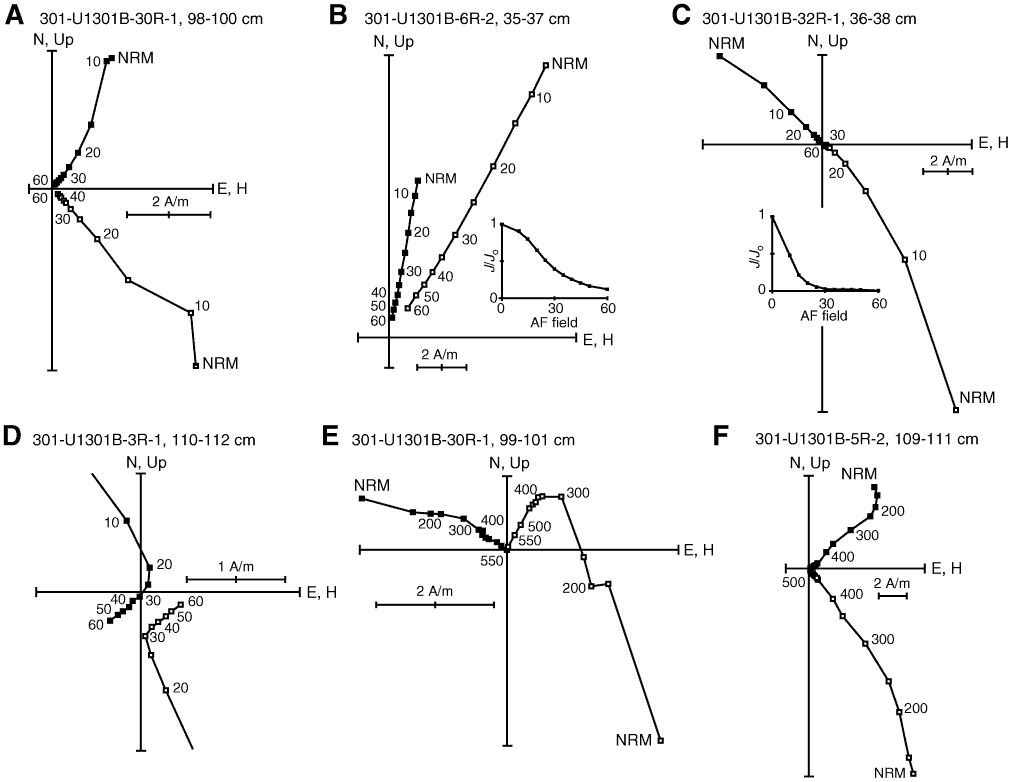
Figure F2. Basalt sample demagnetization behavior, Hole U1301B. A–D. Alternating-field demagnetization. (A) Sample 301-U1301B-30R-1, 98 cm, has a positive inclination, indicating normal polarity at the drill site. (B) Although Sample 301-U1301B-6R-2, 35 cm, would normally be considered to have a reversed magnetization (i.e., negative inclination), the sample gives an isolated result and shows no downward overprint, as do most other samples, so it is thought to have been accidentally inverted during curation. (C) Sample 301-U1301B-32R-1, 36 cm, shows a large downward drill string overprint. (D) Sample 301-U1301B-3R-1, 110 cm, veers from the simple univectorial decay at high-field demagnetization steps. E–F. Thermal demagnetization. (E) Sample 301-U1301B-30R-1, 99 cm, shows two components with a high-temperature reversed polarity characteristic magnetization, whereas (F) Sample 301-U1301B-5R-2, 109 cm, shows a normal polarity magnetization after removal of the drill string overprint. The latter is an example of Type 2 or 3 behavior. Sample 301-U1301B-30R-1, 99 cm, is an example of Type 5 behavior. If the inclination were shallower, it would be classified as Type 1 (see “NRM and directional measurements” for discussion of behavior classes).
